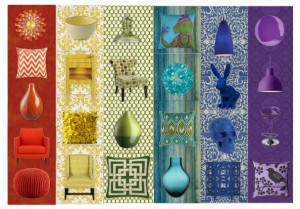 Blue for productivity. Blue is a color that, in Western culture, we often associate with sadness or mysticism. This is our subjective take on it, as blue can represent royalty or power in other parts of the world. This may come as a surprise, but color psychologists have learned through studies that the most universal effect that the color blue has on people is productivity. Psychologists believe this is because blue is associated with calmness, thoughtfulness and organization, and influences those observing it to introspect. Other color psychologists observe that the blue of the sky and of water is overwhelmingly the most blue that humans take in, and its representation of wide open spaces puts distractions out of mind.
Blue for productivity. Blue is a color that, in Western culture, we often associate with sadness or mysticism. This is our subjective take on it, as blue can represent royalty or power in other parts of the world. This may come as a surprise, but color psychologists have learned through studies that the most universal effect that the color blue has on people is productivity. Psychologists believe this is because blue is associated with calmness, thoughtfulness and organization, and influences those observing it to introspect. Other color psychologists observe that the blue of the sky and of water is overwhelmingly the most blue that humans take in, and its representation of wide open spaces puts distractions out of mind.- Green for balance. Green is most commonly associated with nature because a majority of plant life on earth is green. Humans take in green largely through nature, so we associate green with natural living and surroundings. Not surprisingly, green has a balancing effect on our psychology. It is fitting that all Western labels that represent organic products or natural living are in green, and catch phrases like “go green” means making an effort to make life practices more sustainable, which is essentially another term for balanced.
- Lavender for calm. This one likely does not come as a surprise either. The things that occur in nature that are lavender are predominately calm times of day and plant life, particularly flora. Purple plant life is largely associated with flowers and herbs, which have therapeutic benefits. The sky is also purple at dawn and at dusk, which are times of day that are associated with serenity.
- Yellow for energy. Again drawing on nature associations, the sun is obviously the most universal source of yellow that people the globe over observe. The sun is, of course, pure energy, so it is entirely logical that we would associate yellow with energy. The psychological effects of being surrounded by the color yellow are that of invigoration and stimulation.